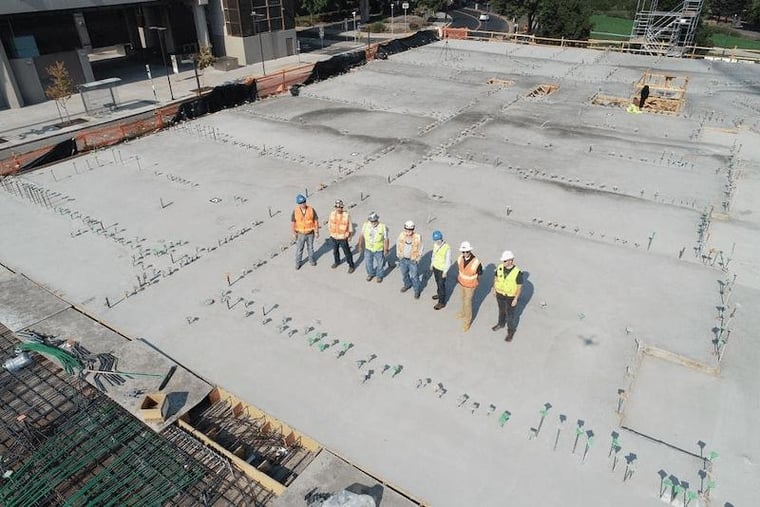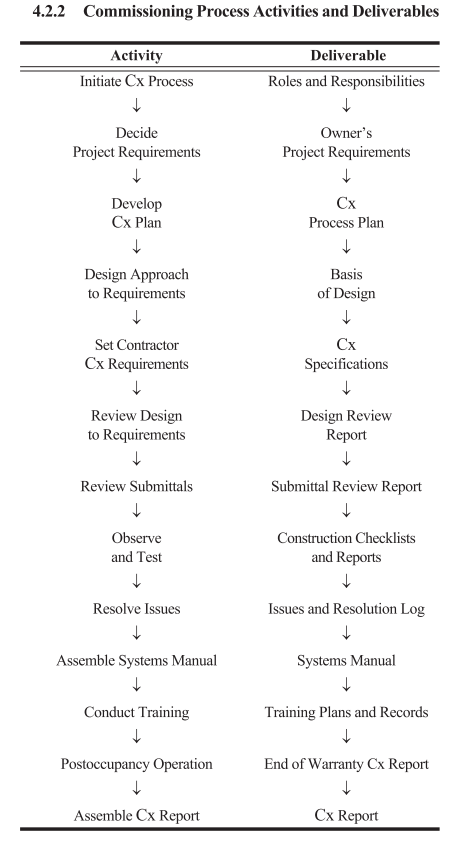
What Is Commissioning?
The American Society of Heating, Refrigerating, and Air-Conditioning Engineers (ASHRAE) Standard 202-2013 defines commissioning (Cx) as “a quality-focused process for enhancing the delivery of a project.” It verifies and documents that all commissioned systems and assemblies are planned, designed, installed, tested, operated, and maintained to meet the Owner's Project Requirements (OPR).Put simply, commissioning aligns teams, resources, and timelines to the owner's requirements to deliver a functional, compliant, and energy-efficient building. In a nutshell, commissioning aims to achieve First Time Quality.
Check out FTQ360's Commissioning Demo:
Benefits of Commissioning
Including commissioning in your project delivers several measurable benefits:
- Reduce energy, construction, and operational costs through emerging technologies that provide more affordable methods of construction
- To produce efficient, safe, and healthy buildings for occupants
- Create high-quality environments to boost workplace performance
- Prevent business losses due to poorly designed buildings
- Reduce present and future deficiencies
- To help owners obtain relevant certifications through building performance rating systems. These ratings allow owners to install energy resource technologies that help in reducing operational costs.
- For improved quality assurance and risk management.
This comprehensive guide on commissioning covers facts you need to know and the best practices for a successful commissioning process in three main sections:
- Building commissioning process
- Types of project commissioning
Building Commissioning Process
The best practice is to begin the building commissioning process before construction starts. Early involvement of the commissioning authority (CxA) helps reduce design rework, change orders, and costs.
A typical project commissioning process involves the phases below:
- Planning
- Design and documentation
- Construction
- Post-construction
 (Image source: gsa.gov)
(Image source: gsa.gov)
Planning Stage
The planning stage involves pre-planning, feasibility studies, establishing the owner's needs, scope, and design requirements for the project. The project manager, commissioning authority, and other stakeholders work together to ensure alignment throughout the process and provide an unbiased assessment to the owner. The commissioning plan involves the activities below:
- Identifying team members, assigning responsibilities, and determining training needs
- Creating commissioning specifications
- Establishing quality, efficiency, and functionality goals
- Identifying a commissioning scope and budget
- Setting commissioning schedules
- Establishing testing and inspection activities
The commissioning team comprises the core team that will be part of the construction process. This group consists of:
- The project manager or team leader overseeing the building project
- Commissioning provider/agent (CxA)
- Client’s operating personnel and technical team
- Construction manager (CM)
- Contractors and subcontractors
- Architect and Engineers (A/E)
Design Phase
The design phase translates the Owner’s Project Requirements into design decisions and documentation.
Here, the commissioning provider:
- Reviews and refines OPRs
- Creates commissioning specifications
- Integrates activities into the project schedule
- Identifies deliverables
Using commissioning software at this stage helps automate documentation, track updates, and streamline communication between teams.
 (Image source: govtribe.com)
(Image source: govtribe.com)
Construction Stage
The project manager and agent review and revise the commissioning plans, project submittals, and operational requirements for project conformity and quality control.
Here, the commissioning provider implements their requirements into the purchase orders approved by the project manager and construction manager. This stage involves the rest of the commissioning team installing components, systems, quality control inspections, and record maintenance of functional testing.
As mentioned earlier, the primary purpose of commissioning is to produce high-quality building projects, so at the construction stage, the key deliverable of a Cx agent is to monitor progress and ensure each process is conducted according to set standards. This feedback is then captured in progress reports and recorded in the quality management software.
What makes or breaks a construction project is how teams collaborate and communicate throughout this process. You can have great designs and well-laid-out plans, but communication ensures the project is completed in good time and within budget. Project management software improves communication and reduces collaboration inefficiencies.
Post-construction/Project Closeout Phase
The best practice is to involve your commissioning provider to assess their effectiveness against the results during this phase. This exercise ensures that deficiencies are corrected quickly, and the final commissioning report accurately captures all records for accurate closeout and documentation handover.
Types of Project Commissioning
Commissioning services do not have to be applied for new projects only. There are different models depending on the type of project. They are:
-
Retro-Commissioning
Applies to projects that started without an initial commissioning plan. Many projects that did not undergo the commissioning process end with errors and deficiencies, forcing companies to reverse-engineer results into the OPRs. The main objective in retro-commissioning is to identify the mistakes, flaws, and non-compliant processes and develop corrective, low-cost solutions.
-
Re-Commissioning
This model applies commissioning to a previously commissioned project. Existing building systems often require adjustments due to advanced technology, sustainability advancements, and the changing needs of owners and tenants. It's recommended that commissioning be applied to maintain quality and reduce operating costs.
-
Continuous Commissioning
Continuous commissioning ensures projects continuously adhere to quality standards, an ever-changing regulatory landscape, and technology advancement. This constant exercise also ensures a project stays close to the Owner's Project Requirements regardless of time and the team assigned to the project.
Commissioning Best Practices
To achieve consistent quality and compliance, apply these commissioning best practices:
- Involve the CxA early, ideally before construction begins
- Use digital commissioning software to track documentation and inspections
- Define clear acceptance criteria and test procedures
- Hold regular coordination meetings to align all teams
- Maintain a centralized repository for checklists, test results, and manuals
- Track deficiencies through to closure with documented proof
- Train operational staff before handover for long-term performance
Building Commissioning Documents
Proper documentation underpins the entire commissioning process.
The main document is the Operations and Maintenance (O&M) Manual, which includes:
- Certifications and approvals
- Equipment data and warranties
- Test results and inspection reports
- Maintenance and performance instructions
Thorough documentation keeps your project compliant and your team accountable at every phase.
How FTQ360 Simplifies the Commissioning Process
At FTQ360, we understand how challenging it is to manage and control commissioning projects, document inspections, performance data, technical tests, and resolve deficiencies, all while holding multiple teams accountable. That’s why we created a commissioning platform to improve and streamline your commissioning process and achieve first-time quality.
Ready to start your building project on the right path? Get in touch with us today for a free software trial.
FAQs
What is commissioning in construction?
Commissioning is a quality-focused process that ensures building systems meet the owner’s performance, safety, and efficiency requirements from design to handover.
What are the main types of commissioning?
Retro-commissioning (for existing buildings), re-commissioning (re-establishing performance), and continuous commissioning (ongoing optimization).
Why is commissioning important?
It reduces change orders, improves building performance, ensures compliance, and enhances safety and energy efficiency.
When should commissioning start?
Ideally in the planning phase, so Owner’s Project Requirements influence design, procurement, and construction.
Who is the Commissioning Authority (CxA)?
A qualified professional or firm responsible for managing, coordinating, and validating commissioning activities.
Is it “commissioning” or “commisioning”?
The correct spelling is commissioning. “Commisioning” (with one ‘s’) is a common misspelling.
![[FREE GUIDE] BETTER QUALITY THOUGH ADVANCED COMMISSIONING](https://no-cache.hubspot.com/cta/default/3353989/fc98d644-68d8-4222-852b-08709cac7136.png)